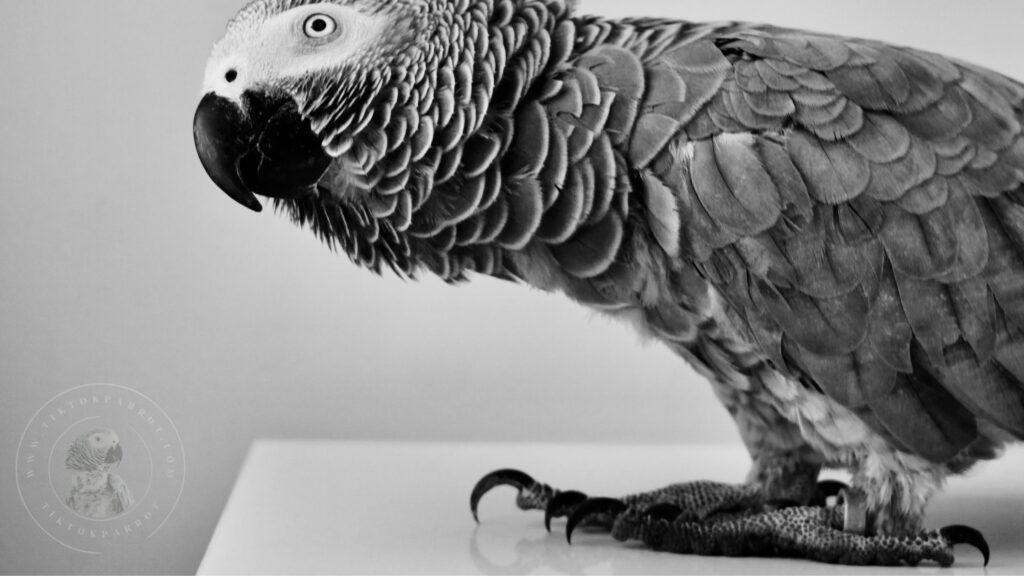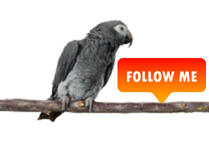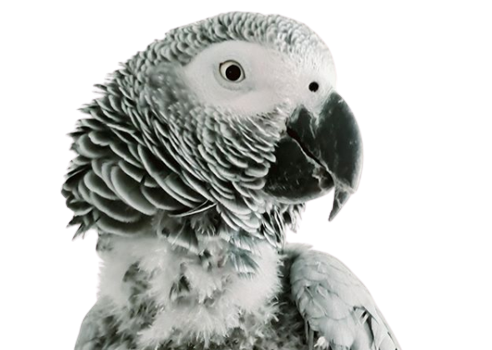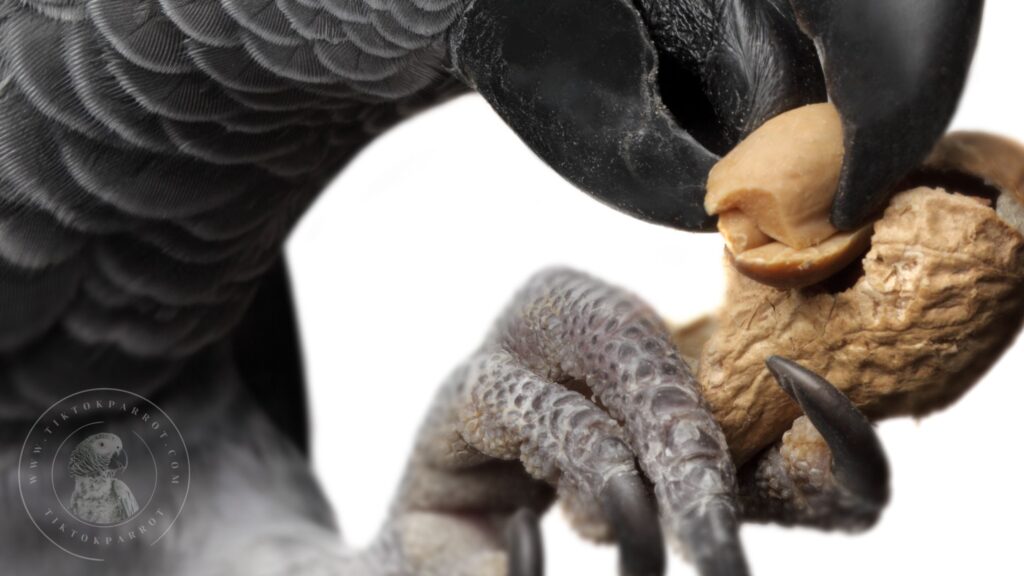So, you’ve got yourself an African Grey parrot, and you want to make sure their claws are in tip-top shape. Well, you’ve come to the right place! In this comprehensive guide, we’ll walk you through the process of grooming and maintaining your African Grey’s claws, ensuring they stay happy and healthy.
Discover the ultimate guide to grooming and maintaining African Grey parrot claws. Keep your feathered friend happy and healthy with our step-by-step tips!

Understanding African Grey Parrot Claws
Before we jump into grooming, let’s take a moment to understand why claw care is essential for your African Grey. Like all birds, African Greys use their claws for perching, climbing, and manipulating objects. Over time, their claws can become overgrown, leading to discomfort, difficulty perching, and even injury. That’s why regular claw maintenance is crucial for your parrot’s well-being.
Step 1: Gather Your Supplies
Before you begin grooming your African Grey’s claws, gather all the necessary supplies. You’ll need:
- A pair of pet nail clippers or a Dremel tool with a sanding attachment
- Styptic powder or cornstarch to stop bleeding in case of accidental cuts
- A towel or perch to help restrain your parrot during the grooming process
Step 2: Create a Comfortable Environment
Next, it’s essential to create a comfortable and stress-free environment for your African Grey. Find a quiet, well-lit area with minimal distractions where you can safely groom your parrot without interruptions. Covering your parrot’s head with a small towel can help keep them calm and prevent them from becoming overly anxious during the grooming session.
Step 3: Secure Your Parrot
Once you’ve set the stage, gently but firmly secure your African Grey to prevent any sudden movements that could lead to injury. You can either wrap them in a towel or use a specially designed perch that restrains their movement while still allowing you access to their claws.
Step 4: Trim with Care
Now it’s time to trim those claws! Using your pet nail clippers or Dremel tool, carefully trim the tips of your African Grey’s claws, taking care not to cut into the quick—the sensitive blood vessel and nerve inside the claw. If you’re unsure where the quick is located, only trim the very tip of the claw to avoid accidentally injuring your parrot.
Step 5: Smooth the Edges
After trimming, use a nail file or the sanding attachment on your Dremel tool to smooth out any rough edges and prevent snagging. This step is especially important for African Grey parrots, as their claws can be prone to splitting and cracking if left unchecked.
Step 6: Reward and Reassure
Once you’ve finished grooming your African Grey’s claws, be sure to reward them with plenty of praise and treats for being such a good sport. This positive reinforcement will help build trust and make future grooming sessions more manageable for both you and your parrot.
How do I know if my parrots nails are too long?
You can tell if your parrot’s nails are too long if they appear overgrown or curling, making it difficult for your parrot to perch comfortably. Additionally, if you hear clicking sounds when your parrot walks or see them having trouble gripping onto perches, it’s a sign their nails may need trimming. Regularly checking your parrot’s nails and observing their behavior can help you determine if they need grooming.
Maybe you are wondering if long nails hurt birds? The answer is “YES”, long nails can potentially cause discomfort or even pain for birds. When a bird’s nails become too long, they can curl around and press into the sensitive pads of their feet, leading to irritation, difficulty perching, and even injury.
Additionally, excessively long nails can affect a bird’s balance and agility, impacting their overall well-being and quality of life. Regular nail trimming is essential to prevent these issues and keep your bird happy and healthy.
Signs Your Bird Needs a Nail Trim
Here are some signs that indicate your bird may need a nail trim:
- Difficulty Perching: If your bird struggles to perch comfortably or frequently slips or loses balance, it could be due to overgrown nails.
- Visible Curling: If you notice your bird’s nails curling around or growing into their foot pads, it’s a clear sign that they need a trim.
- Clicking Noises: When your bird walks or moves around, you may hear clicking sounds if their nails are too long and hitting hard surfaces.
- Damaged Furniture or Clothing: Sharp, overgrown nails can cause damage to furniture, clothing, or other items your bird interacts with, indicating it’s time for a trim.
- Reluctance to Walk: If your bird seems hesitant to walk or prefers to stay in one spot, it could be because their nails are causing discomfort.
- Excessive Scratching: Birds with long nails may scratch at their feet more frequently in an attempt to alleviate discomfort or remove debris caught in their nails.
- Visible Length: Simply examining your bird’s nails regularly can give you a good idea of whether they need a trim. If the nails look excessively long compared to the length of their toes, it’s time for a trim.
Keeping an eye out for these signs and scheduling regular nail trims as needed will help ensure your bird stays comfortable and healthy.
Happy Feet, Happy Parrot
In conclusion, I would say grooming and maintaining your African Grey parrot’s claws is an essential aspect of responsible pet ownership. By following these simple steps and providing regular care and attention to your parrot’s claws, you can ensure they stay healthy, happy, and comfortable for years to come.
Remember, practice makes perfect, so don’t be afraid to take your time and seek guidance from a veterinarian or experienced bird owner if you’re unsure. With patience and love, you’ll become a pro at pedicures in no time!
If you found this blog helpful, It would be great if you could share it with your family and friends who might find it useful as well.
You might like to read these as well
How to Train Your Parrot to Step Up or Down (Command)
Teaching Your African Grey Parrot to Talk
Things you need to know about an African Grey Parrot’s Cage
Tips for Buying an African Grey Parrot
Stages of Development of an African Grey Parrot
African Grey vs Amazon – A Comparison of Two Popular Pet Birds
Are African Grey Parrots Smarter Than Dogs?
For more useful content about African grey parrots, you can subscribe my site with your email to get notification upon publishing a new blog, the subscribe box you can see on the right side of this page. Also if you get an alert on your web browser while browsing my site, allow it and that will also give you an alert whenever I publish a new blog.
Stay safe and much love!




